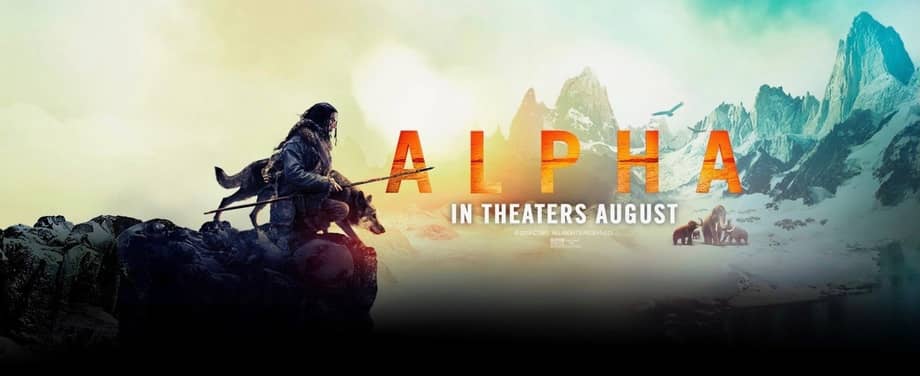Fantasia 2018, Day 17, Part 2: Punk Samurai Slash Down
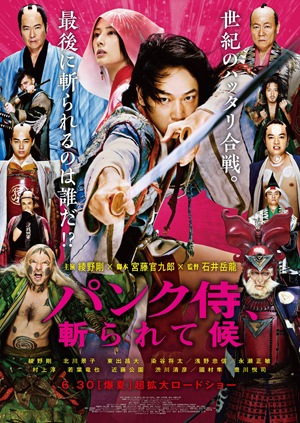 The last movie I saw on Saturday, July 28, was at the Hall Theatre. It was Punk Samurai Slash Down (Panku Samurai Kirarete Soro, パンク侍、斬られて候), an adaptation of Ko Machida’s 2004 novel directed by Gakuryu Ishii and scripted by Kankuro Kodo (who also wrote Too Young To Die!). It’s a period story about a wandering samurai, Junoshin Kake (Go Ayano, also at Fantasia this year as Sato in Ajin: Demi-Human), who concocts a scheme to get himself hired as a retainer of the Kurokaze Han noble house. He kills an old man, and convinces one faction of the Kurokaze Han, led by Shuzen Oura (veteran Jun Kunimura, whose string of credits include The Wailing as well as this year’s Destiny: The Tale of Kamakura) that the dead man was an agent of a suppressed group of heretics called the Belly-Shaking cult. The cult believes that the world has been eaten by a gigantic tapeworm. The ideal is to be excreted from the tapeworm, which is brought about by shaking the belly. But the contempt for the world also has led the cult to massive rioting and cruel criminal acts in the past; the spectre of their revival is terrifying — until it turns out to be false, and Kake’s threatened with execution. Unless he can prove himself “innocent” by secretly bringing the cult into existence, which would also enhance the credibility of Oura’s political faction. He sets out to create the threat he’s warned against, and things rapidly spiral out of control.
The last movie I saw on Saturday, July 28, was at the Hall Theatre. It was Punk Samurai Slash Down (Panku Samurai Kirarete Soro, パンク侍、斬られて候), an adaptation of Ko Machida’s 2004 novel directed by Gakuryu Ishii and scripted by Kankuro Kodo (who also wrote Too Young To Die!). It’s a period story about a wandering samurai, Junoshin Kake (Go Ayano, also at Fantasia this year as Sato in Ajin: Demi-Human), who concocts a scheme to get himself hired as a retainer of the Kurokaze Han noble house. He kills an old man, and convinces one faction of the Kurokaze Han, led by Shuzen Oura (veteran Jun Kunimura, whose string of credits include The Wailing as well as this year’s Destiny: The Tale of Kamakura) that the dead man was an agent of a suppressed group of heretics called the Belly-Shaking cult. The cult believes that the world has been eaten by a gigantic tapeworm. The ideal is to be excreted from the tapeworm, which is brought about by shaking the belly. But the contempt for the world also has led the cult to massive rioting and cruel criminal acts in the past; the spectre of their revival is terrifying — until it turns out to be false, and Kake’s threatened with execution. Unless he can prove himself “innocent” by secretly bringing the cult into existence, which would also enhance the credibility of Oura’s political faction. He sets out to create the threat he’s warned against, and things rapidly spiral out of control.
This is a very odd movie; it doesn’t simply begin strangely, but continually increase its oddness at each point when you think you’ve begun to assimilate what it’s doing. The scale increases, as well, as the Belly-Shaker cult grows beyond all expectation and a wholly unexpected other faction emerges. Ultimately the film ends in a cosmic battle of thousands of samurai and their allies against the Belly-Shaker cult, and perhaps it’s a mark of success that the large-scale battle scene never overwhelms the satirical tone of the film but ends up supporting it. Without actually being Gilliam-like there’s a bit of a feel to the ending of a Gilliam movie, wild exuberance petering out into a knowing anti-climax.
There is a range of tones to the movie, though, and Kake is enough of a coherent character to engage an audience. Conversely, there’s a narrator (Masatoshi Nagase) telling the story in part through voice-over, providing another perspective; eventually we find out who this seemingly-omniscient narrator is, and learn he’s actually embedded in the story. Nobody’s above the fray, nobody’s out of the world of the film — even those trying to get themselves out of the world entirely. The gnostic leanings of the Belly-Shaker cult feel something out of a Philip K. Dick story, a paranoiac danger that might actually understand reality better than anyone would like. Except they’re the villains; and except that the nominal heroes aren’t heroic either, as the first thing we see Kake do is kill a man in cold blood. Ayano’s charismatic enough that we tend to forget this enough to accept him as a protagonist, but the movie doesn’t. (And this does come back to him in a telegraphed bit of poetic justice.)
 Saturday, July 28, saw me arrive at the Hall Theatre early for a showing of the Japanese historical fantasy Laughing Under the Clouds, yet another manga adaptation. Following that, I’d head across the street to the J.A. De Sève Theatre, where I’d watch a short film showcase called Afromentum. It’d feature four short films by Black filmmakers from around the world — including an adaptation of Nnedi Okorafor’s short story “Hello, Moto.”
Saturday, July 28, saw me arrive at the Hall Theatre early for a showing of the Japanese historical fantasy Laughing Under the Clouds, yet another manga adaptation. Following that, I’d head across the street to the J.A. De Sève Theatre, where I’d watch a short film showcase called Afromentum. It’d feature four short films by Black filmmakers from around the world — including an adaptation of Nnedi Okorafor’s short story “Hello, Moto.”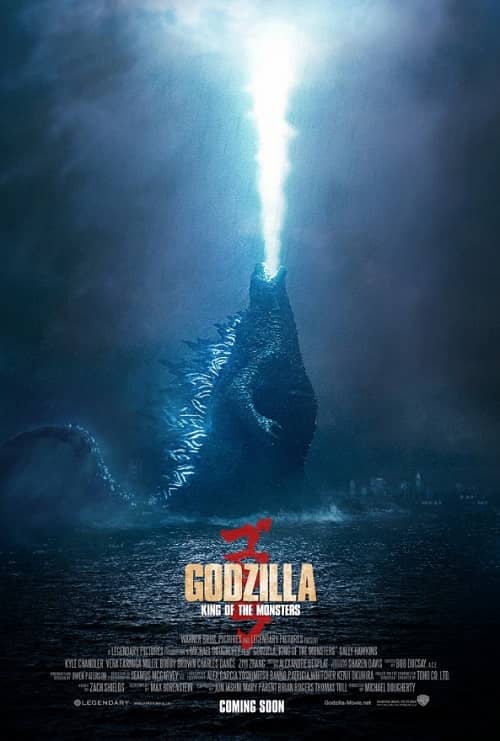
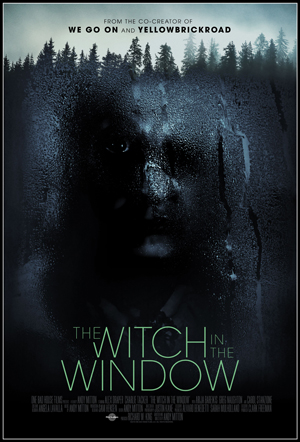 I had two movies to see on Friday, July 29. The first, perfectly fitting the small De Sève Theatre, was The Witch in the Window, a quiet character-centred horror film. The second was another live-action manga adaptation, Ajin: Demi-Human, a fast-paced explosion-oriented semi-super-hero story which fit the larger Hall Theatre as well as The Witch in the Window suited the De Sève. I had certain hopes for both, and in both cases those hopes were wildly exceeded. These are two excellent movies, of very different kinds.
I had two movies to see on Friday, July 29. The first, perfectly fitting the small De Sève Theatre, was The Witch in the Window, a quiet character-centred horror film. The second was another live-action manga adaptation, Ajin: Demi-Human, a fast-paced explosion-oriented semi-super-hero story which fit the larger Hall Theatre as well as The Witch in the Window suited the De Sève. I had certain hopes for both, and in both cases those hopes were wildly exceeded. These are two excellent movies, of very different kinds.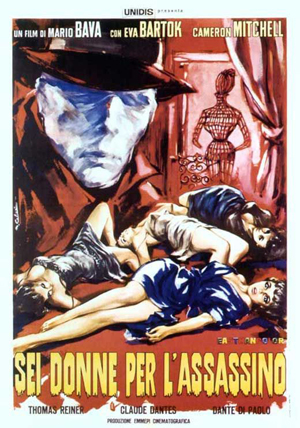 On the evening of Thursday, July 26, I made my way to the Cinémathèque Québécois, well east of the main Fantasia theatres, for a screening of a film classic. Fantasia was presenting Mario Bava’s classic 1964 horror-mystery film Blood and Black Lace (Sei donne per l’assassino). It’s one of the first giallo films, a genre of surreal thriller particularly identified with Italian directors. This was the original 88-minute Italian version, restored by Arrow Films for their recent blu-ray edition of the film.
On the evening of Thursday, July 26, I made my way to the Cinémathèque Québécois, well east of the main Fantasia theatres, for a screening of a film classic. Fantasia was presenting Mario Bava’s classic 1964 horror-mystery film Blood and Black Lace (Sei donne per l’assassino). It’s one of the first giallo films, a genre of surreal thriller particularly identified with Italian directors. This was the original 88-minute Italian version, restored by Arrow Films for their recent blu-ray edition of the film.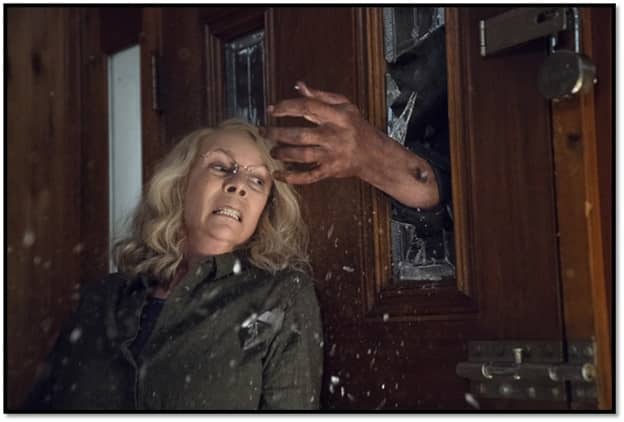
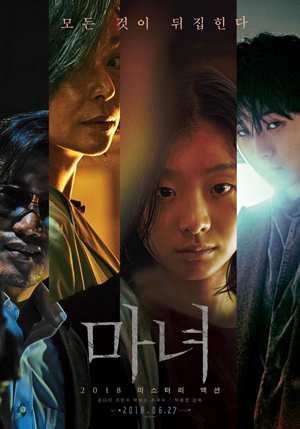 I had two movies on my schedule for Wednesday, July 25. The first was The Witch: Part 1. The Subversion, a Korean action movie with super-hero elements. The second was a German-language Swiss movie called Blue My Mind, about a teenager moving to a new school and finding herself undergoing a strange metamorphosis. Both films were about young women, and both leads had elements of the inhuman to them. But these things were expressed in very different ways.
I had two movies on my schedule for Wednesday, July 25. The first was The Witch: Part 1. The Subversion, a Korean action movie with super-hero elements. The second was a German-language Swiss movie called Blue My Mind, about a teenager moving to a new school and finding herself undergoing a strange metamorphosis. Both films were about young women, and both leads had elements of the inhuman to them. But these things were expressed in very different ways.
 Late in the evening of Tuesday, July 24, I made my way to the J.A. De Sève Theatre for my one film of the day: Violence Voyager, an 83-minute animated feature by Japanese writer-director Ujicha. We follow an American schoolboy in Japan, Bobby (Aoi Yuki), as he and his friend explore some hills near his home. They find a strange, nearly-abandoned amusement park, but upon entering find themselves caught up in a terrible scheme. They and other children are captured, mutilated, mutated, and (in many cases) killed. Can Bobby free himself and others, and destroy the horrible place called Violence Voyager?
Late in the evening of Tuesday, July 24, I made my way to the J.A. De Sève Theatre for my one film of the day: Violence Voyager, an 83-minute animated feature by Japanese writer-director Ujicha. We follow an American schoolboy in Japan, Bobby (Aoi Yuki), as he and his friend explore some hills near his home. They find a strange, nearly-abandoned amusement park, but upon entering find themselves caught up in a terrible scheme. They and other children are captured, mutilated, mutated, and (in many cases) killed. Can Bobby free himself and others, and destroy the horrible place called Violence Voyager?